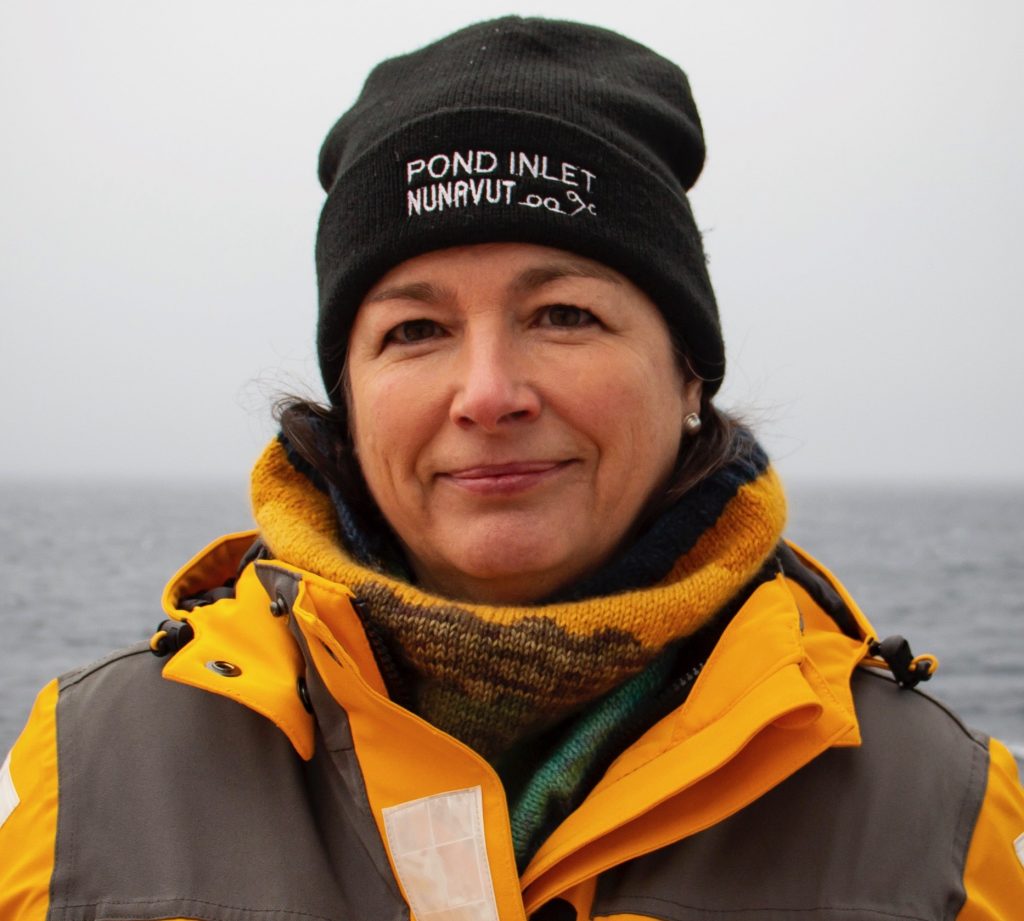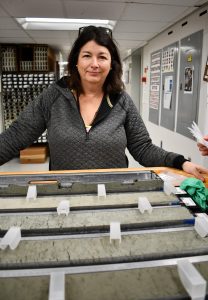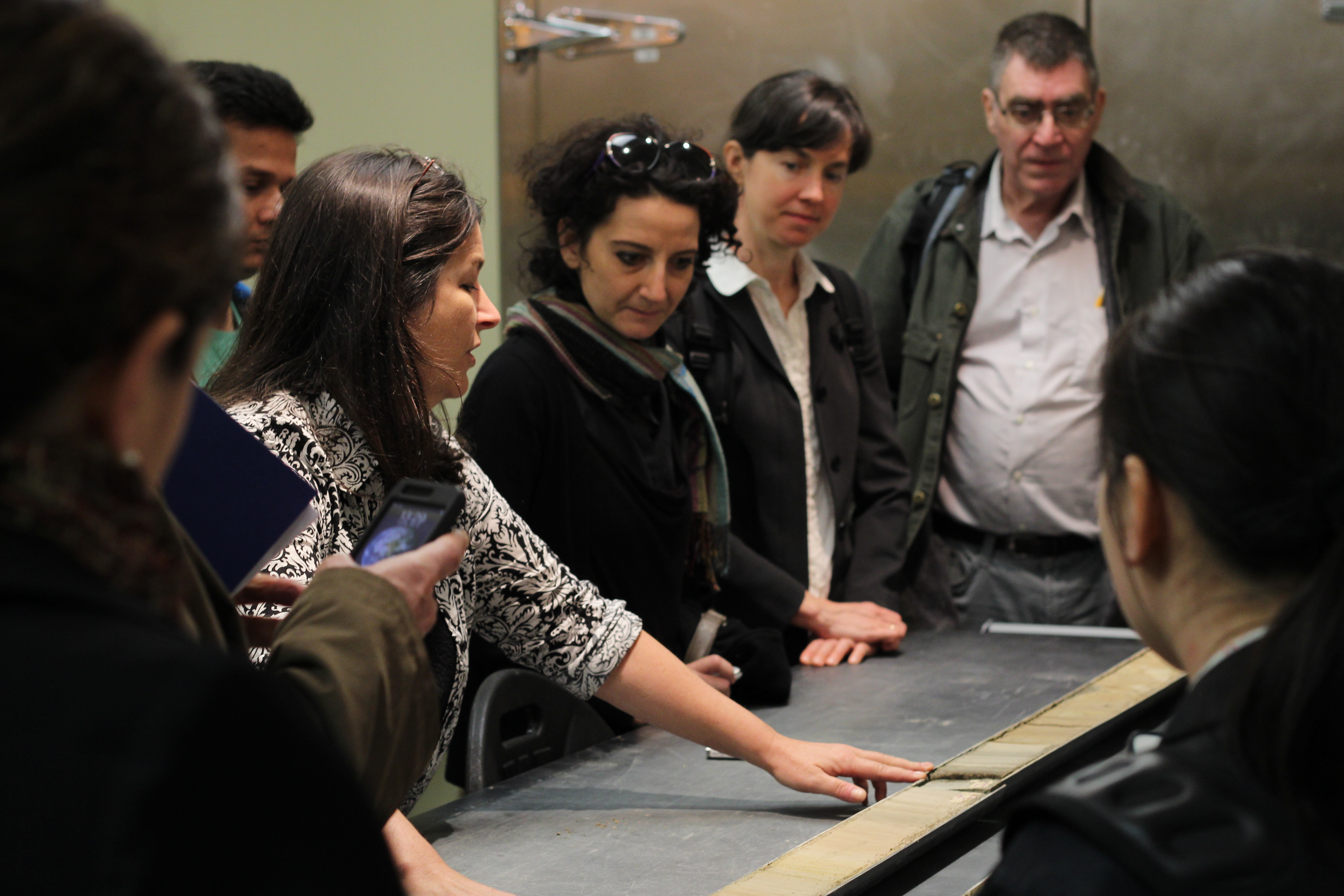
A Chat with Mo
Each night, around about 2 AM, I look forward to my jaunt with co-Chief Scientist Maureen Raymo into the frigid darkness and blowing snow and up to the bridge to get an updated iceberg report. Last night, I also had the opportunity to relax with Mo and find out more about her science, goals, and journey to becoming a giant in her field.
This is her seventh expedition at sea and her second as co-Chief Scientist on the JR, and her broad goal is “…to understand how the Antarctic ice sheet changes when climate changes. So, if the world gets warmer, what’s the first thing the Antarctic Ice Sheet does? Does it melt? Does it accumulate more snow? If it melts, where does it melt? And when it’s melting, how fast does it melt? And why is it melting there first?”
These are the questions driving most of us in the science team. The Antarctic Ice Sheet is the massive layer of ice that covers the vast continent of Antarctica, on average 1.3 miles (~ 2 km) thick, and it contains enough ice to raise global sea level by nearly 60 meters (nearly 200 feet).
“If I know the answers to these things,” Mo continues, “that will help us build a better model that can predict what’s going to happen in our future. How much warming is going to melt how much of the ice? And when we know how much of the ice is going to melt, then we know how much sea level is going to rise around the world. And obviously, that impacts everybody.”
She says that, in the US alone, 4 million people live within four feet of sea level. “Water could be coming in under their front door in under 100 years. 60 years maybe.” She notes that in places where the land is subsiding, which includes much of the heavily populated US Eastern Seaboard, sea level rise will be even worse.

Her personal studies extend to the effects of precession on changes in polar ice. Precession is the shift in the rotation of Earth on its axis. In fact, Earth spins like a top, but like a wobbling top on a 23,000-year cycle.
“Precession controls how hot it gets in summer. Ice sheets care about how hot it gets in summer. It doesn’t really matter how much snow you grow in winter: if you have a super-hot summer, it’s going to melt. And if you have a super-cold summer, it’s going to survive and grow.”
While models and modern observations bear this out, why only a barely discernible effect of precession on ice sheets is observed during some time periods is a puzzle Mo has been thinking about for thirty years. To explain this enigma, she has proposed a hypothesis that changes in the Antarctic Ice Sheet have been far more dynamic than previously accepted and that it has been growing and melting more dramatically with this 23,000-year frequency. She hopes that analyzing the sediment we are retrieving on Expedition 382 Iceberg Alley may help shed some more light on this mystery—one that has wide-ranging implications for humanity’s future in a warming world.
Mo wanted to be an oceanographer since she was eight years old. When I asked her about retirement, she said, “I can’t imagine ever giving up thinking about how the world works and looking at data and thinking about what data means.” And she has certainly done that and is now both a Research Professor and the Director of the Lamont-Doherty Core Repository at the Lamont-Doherty Earth Observatory of Columbia University.
Once more, I reflect on how gratifying it is to be out here learning from and getting to know people who share my overwhelming passion for the Antarctic Ice Sheet and who have dedicated their lives to just that. To Mo and the others in our science party, as to me, there’s nothing more important to understand and share with the world.
